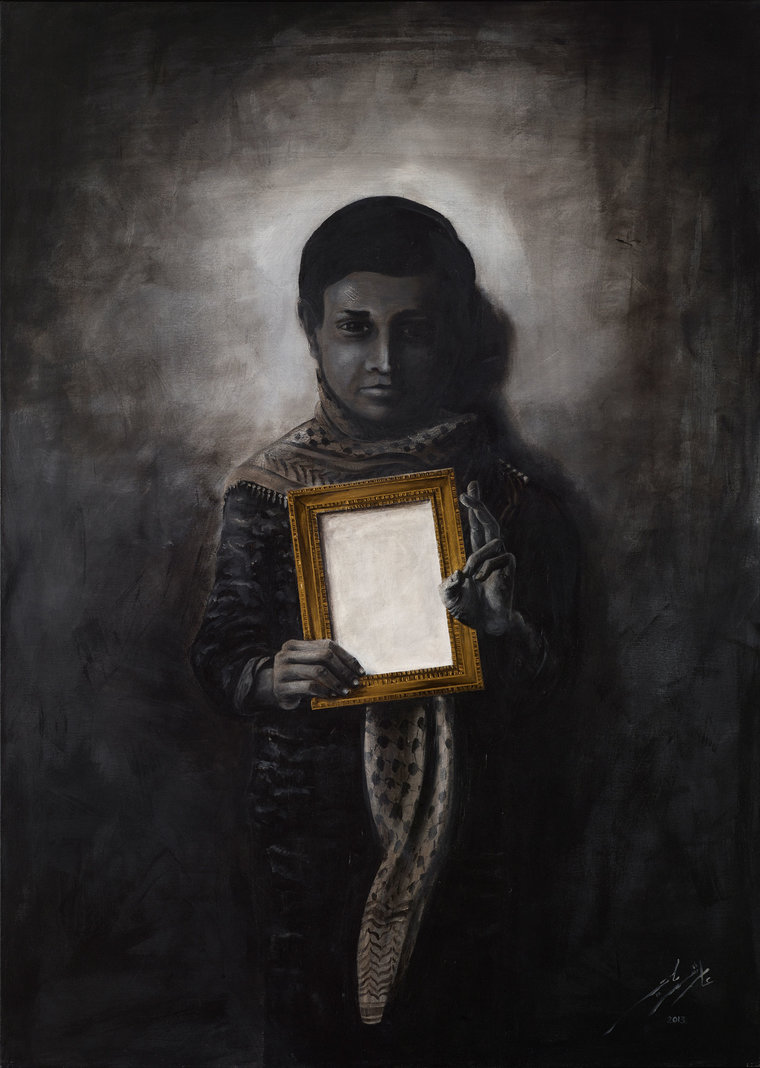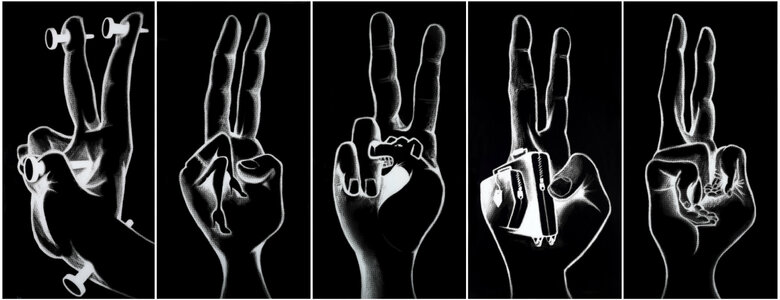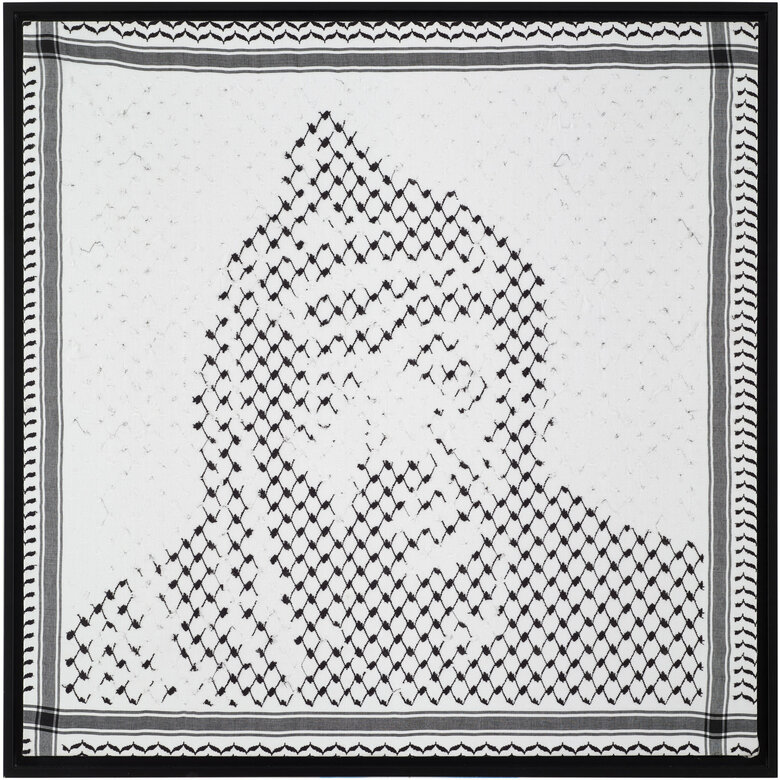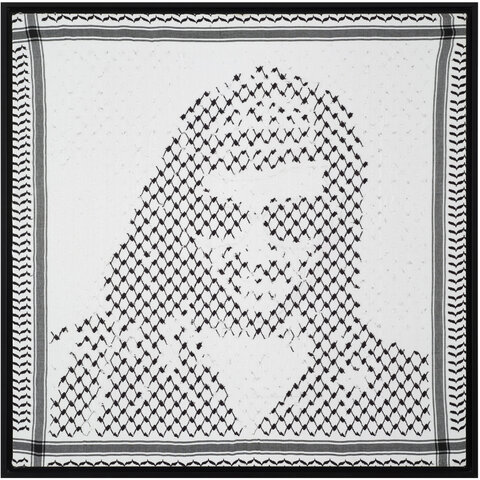Golden Frame, 2013, depicts Amer Shomali’s childhood self-portrait. It is one
of the three paintings offering a glimpse into the artist’s childhood while he
lived in the Yarmouk refugee camp in Damascus. The refugee camp was part
of a more giant military camp, and Shomali recalls how militants used to
babysit him. The artist draws inspiration from real-life photos taken when
Yasser Arafat was forced to leave Beirut for Tunisia, during the 1982 Israeli
invasion of the city. The three-part series of paintings depict people clutching
frames of Arafat’s photos, perceiving Arafat as the savior, the one who will
secure their return to Palestine.
As time unfolded and Arafat failed to meet Palestinian people’s expectations, the artist revisited these photos, incorporating himself holding an empty frame. This gesture signifies his lack of faith in any figure. The child’s depiction draws parallels from Christ. It hints at the path to salvation embodied in Jesus, and assumingly in Arafat. The child with an empty frame has lost faith in particular political figures. However, he still retains faith in the Holy Spirit, signified by his hand gesture with his three first fingers joined. This symbolizes the Holy Trinity of the Father, the Son, and the Holy Spirit. Its three points represent the virtues of faith, hope, and love, or the three planes of existence – earth, water, and sky.
Signed in Arabic and dated in English on the lower left front



-high-resJPG.jpg)
-high-resJPG.jpg)









